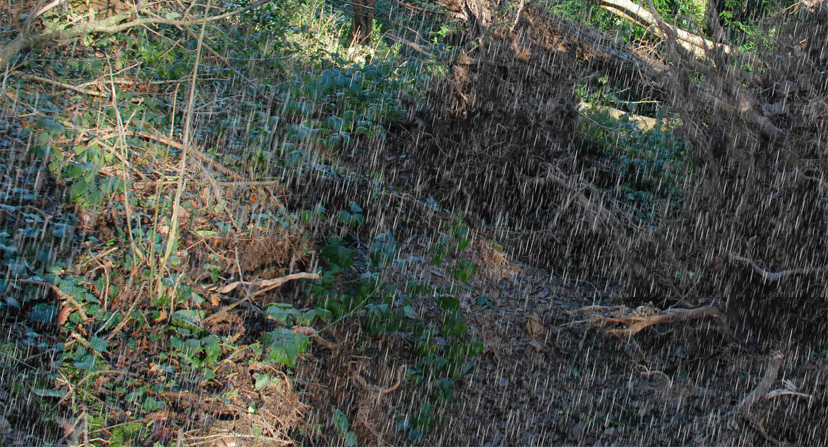 The changing weather conditions appear to be setting up for an El Niño season with the possibility of record-breaking precipitation. Heavy rainfall has the potential to cause major devastation, runoff and even mudslides. The chances of damage increase if hillsides have little grass, few plants or if the soil is dry and packed.
The changing weather conditions appear to be setting up for an El Niño season with the possibility of record-breaking precipitation. Heavy rainfall has the potential to cause major devastation, runoff and even mudslides. The chances of damage increase if hillsides have little grass, few plants or if the soil is dry and packed.
Simple landscaping can be the difference between a helpful rainfall and harmful water damage. Due to California’s ongoing drought, Armstrong Garden Centers reminds all Californians about the importance of preparing your yard for heavy El Niño rains in order to protect your property.
“The most vulnerable areas of your yard are hillsides and slopes,” said Gary Jones, chief horticulturist for Armstrong Garden Centers. “Thankfully, October through December is the ideal planting time for Southern California with warm days and cool nights, so homeowners can quickly establish groundcover on hills to help prevent soil runoff.”
For large areas, and especially on slopes, groundcover plants that are sold in flats may not have time to establish before rainwater washes them away. Instead, opt for six-packs of groundcover, which are more mature and have larger roots that will quickly take off once planted.
“Resist the temptation to pull up dead shrubs and dried grasses,” said Jones. “The roots that remain in the ground will help hold soil during rainstorms. We want to disturb the soil as little as possible.” Instead, plant new groundcover or shrubs in and around the dried, brittle plant material and clean out the old plants after the El Niño season has passed.
In addition to planting the proper groundcover on slopes and hillsides, Armstrong Garden Centers provides the following tips to protect property during El Niño storms:
• Certain plants can help control or cause erosion – Plants that have fibrous roots, such as bearded irises, California wild lilac and manzanitas, are ideal to plant for erosion control. Use this season to sprinkle California wildflower seeds or rye grass over slopes and hillsides, as they’ll quickly establish and can create root structures that aid in soil retention. Include a variety of plants, as their various root systems work together to prevent hills from erosion. However, top-heavy varietals, such as ice plants, can become water-logged and uproot on hillsides during heavy rains, causing more damage and runoff. Save those plants for flat areas.
• New landscaping may need additional care during storms – Avoid replanting entire hillsides or slopes during the rainy season. If you must, hemp nets can help keep seeds and new grasses in place on hillsides during heavy rain. They will naturally decompose with time, leaving behind healthy, established vegetation. Newly created slopes have very unstable soil and will need to be covered with plastic from top to bottom to prevent rain from washing everything away.
• Pay attention to your larger trees – Heavy rains and winds can cause dead branches to fall and possibly cause damage to your property. Make sure trees around your house and other structures are pruned prior to storms.
• Rocks can help prevent runoff – Decorative stones or rocks can help hold soil in place on slight hillsides and slopes by stopping swiftly-running pathways of rainwater. However, rocks are not safe for steep hillsides.
• Have your rain barrels ready – With all the rain expected this year, make sure to capture it with rain barrels. Learn more at ArmstrongGarden.com on how to install and utilize the water you collect.
Find more expert advice on preventing soil erosion and storm damage during the El Niño season at any of the 32 Armstrong Garden Centers locations in California.
Armstrong Garden Centers
Armstrong Garden Centers specializes in a quality selection of garden lifestyle retail and landscape consultation services. Established in 1889, this employee-owned company has served California for 126 years, taking the guesswork out of gardening through innovation and providing the best leaders in customer service. Armstrong Garden Centers is the largest independent retail nursery in California with 32 locations and three growing facilities. For more information on Armstrong Garden Centers and gardening tips, visit www.armstronggarden.com and www.armstronggrowers.com.












